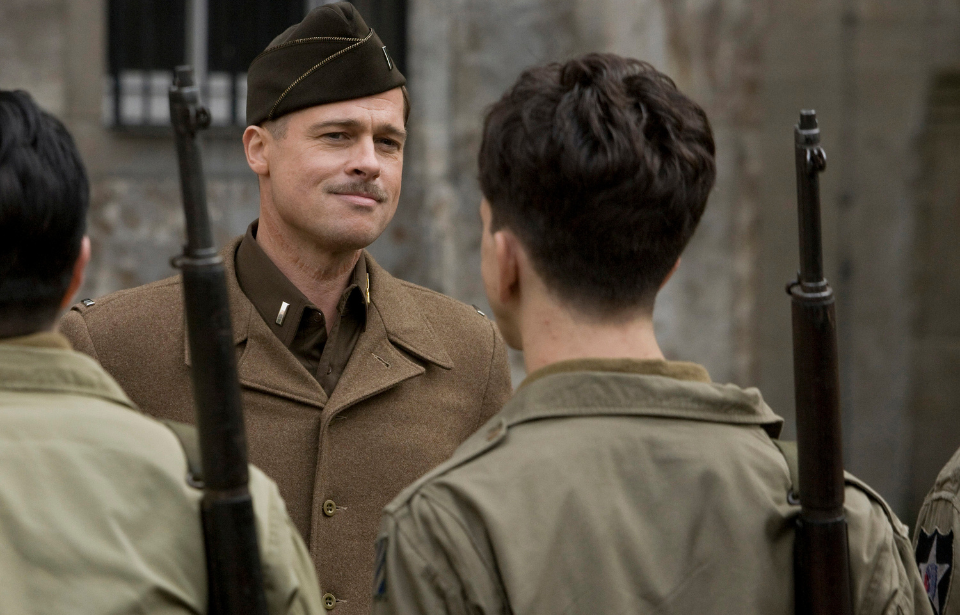2009’s Inglourious Basterds is a war movie, comedy and drama all at the same time. It’s an homage to World War II movies and Spaghetti Westerns, and is just an all-around fantastic Jewish revenge fantasy. While long, it entertains from start to finish, and it truly shows Quentin Tarantino’s love for history.
Below is a list of things you may not know about the film or might have missed, earning it a well-deserved rewatch.
The subtle detail in the opening scene
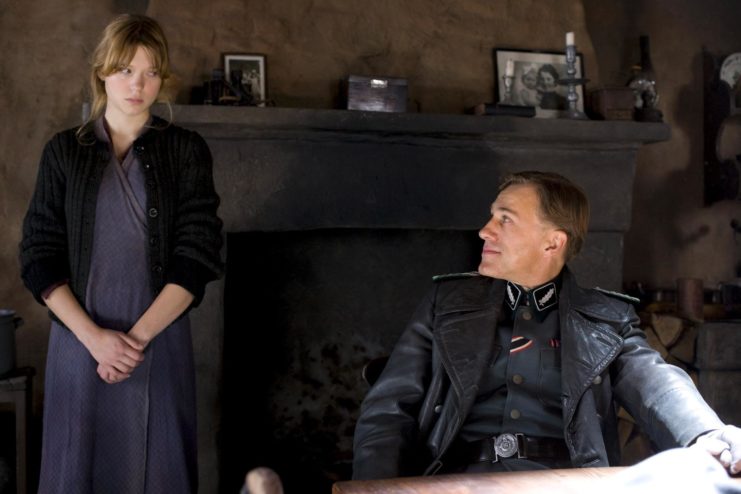
In the opening scene of the film, Schutzstaffel (SS) Col. Hans Landa arrives at the home of a French family, in search of a missing Jewish family believed to be hiding there. When he enters the residence, he sits at the table and the father, Pierre LaPadite, calls for one of his daughters to get him a glass of wine. Landa stops her, grabbing her wrist in a very particular way.
Some audiences believe this was to check her pulse for any hint of whether the family was hiding something. While many argue that having an SS officer in one’s home would automatically make them nervous, others suggest the fear of hiding something (or someone) would strike an obvious difference in one’s pulse.
Other audiences feel the gesture is another movie gimmick where the sinister villain touches their victim in a gentle way. Either way, the scene provides palpable tension leading up to the violence that was about to break out in the home.
Where the name “Aldo Raine” came from
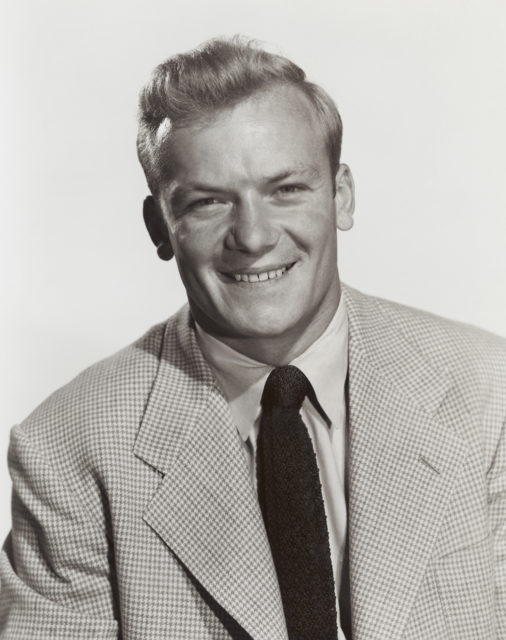
When Tarantino was coming up with the name for head “Basterd” Aldo Raine, he did like he usually does and took inspiration from people who’ve left an impression on him. The first name “Aldo” was inspired by real-life World War II veteran Aldo Ray, who served as a frogman in the US Navy from 1944-46. He was only 18 years old when he enlisted, and when the war came to a close, he moved to Los Angeles and became an actor best known for his role in 1952 film, The Marrying Kind.
The last name “Raine” was inspired by the fictional character Charles Rane, the hook-handed US Air Force major from Rolling Thunder who returns home after spending seven years as a prisoner of war in Vietnam and seeks vengeance for the murders of his wife and son. The combination of the two created Aldo Raine, played by Brad Pitt.
The Black Devils insignia
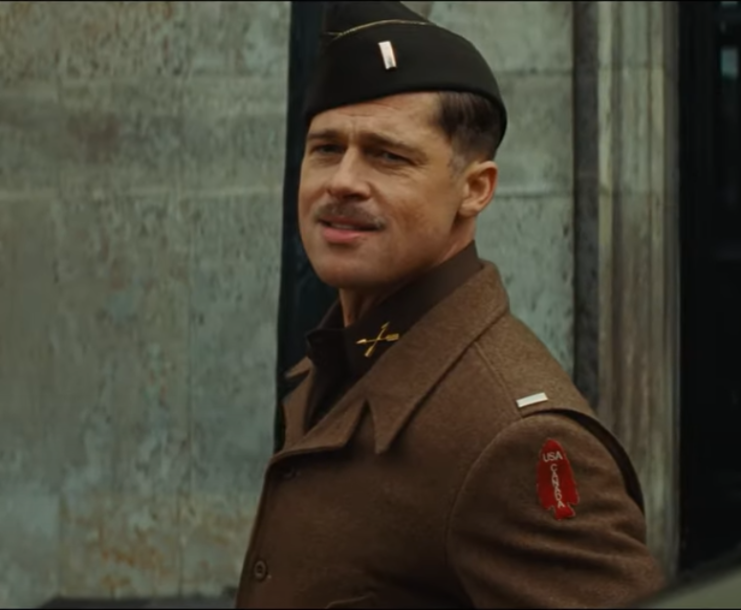
When Aldo Raine is first introduced in the film, he’s seen sporting the “Black Devils” insignia. This was the symbol for the 1st Special Service Force, an elite American-Canadian unit organized in 1942 under the US Fifth Army and disbanded in ’44, prior to the end of the Second World War.
It began under the command of Lt. Col. Robert T. Frederick, and the men were rigorously trained in stealth tactics, hand-to-hand combat, explosives, parachuting, amphibious warfare, mountain warfare and as ski troops. The insignia is a red spearhead with the words “USA” written horizontally and “CANADA” presented vertically, and can be seen on the left shoulder of Aldo Raine.
Tarantino certainly did his homework.
Le Corbeau evades censorship
Shosanna Dreyfus, portrayed by Mélanie Laurent, is a Jewish cinema owner and projectionist whose family was hiding in the LaPadite house at the beginning of Inglourious Basterds. She was the only one to survive and made it her mission to bring an end to the war. At her theater, the film, Nation’s Pride, is played, much to her reluctance.
The second marquee, however, was the 1943 film, Le Corbeau, a very real movie with hidden anti-German messages. The censors missed this, and the film was allowed to play. In real life, the movie was pulled upon the Germans realizing its messages, but not before it saw box office success in France.
Sedgley OSS .38
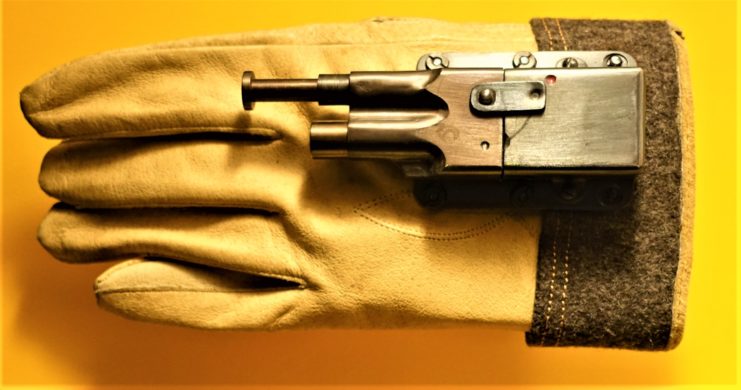
In the film, two American soldiers kill two German guards by punching them while wearing gloves with pistols mounted to them. They look like something out of a movie (pun intended), but were actual weapons manufactured by RF Sedgley for the US Navy. They weren’t very popular, and only a small quantity were manufactured, somewhere between 50 and 200. While there is no recorded use of them in combat, they look really cool both on and off the big screen.
The weapon is a “single-shot .38 S&W barrel mounted alongside a plunger, which extends beyond the muzzle of the barrel. The whole thing is riveted onto a heavy leather glove. When the wearer makes a fist, the plunger and muzzle are left slightly in front of the knuckles. Upon punching something or someone, the plunger is depressed, which fires the cartridge.”
Scalping training – the best three win!
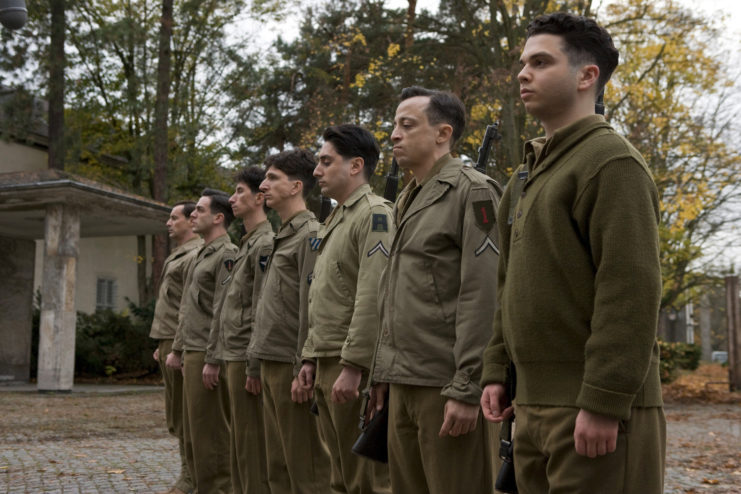
One thing Aldo Raine expects of his “Basterds” was they each present him with 100 scalps from 100 German soldiers. Naturally, the act was a very prominent part of the film. To make it realistic, Tarantino had the actors go through “scalp training.” He even offered them a reward for perfecting the technique – the three best scalpers would be given closeups during the film. Considering it was the highest grossing Tarantino film from 2009-12, having a closeup was definitely a valuable reward.
More from us: The Seven Most Heartbreaking Deaths in Military Movies
The technique was not necessarily accurate and looked more like someone peeling a potato than scalping a human. However, given it was shown in a movie, it certainly accomplished the gruesome procedure that was being displayed.
